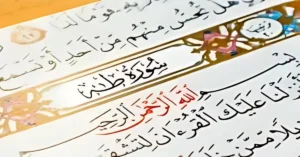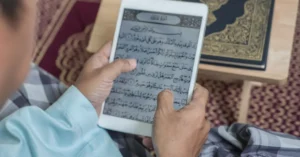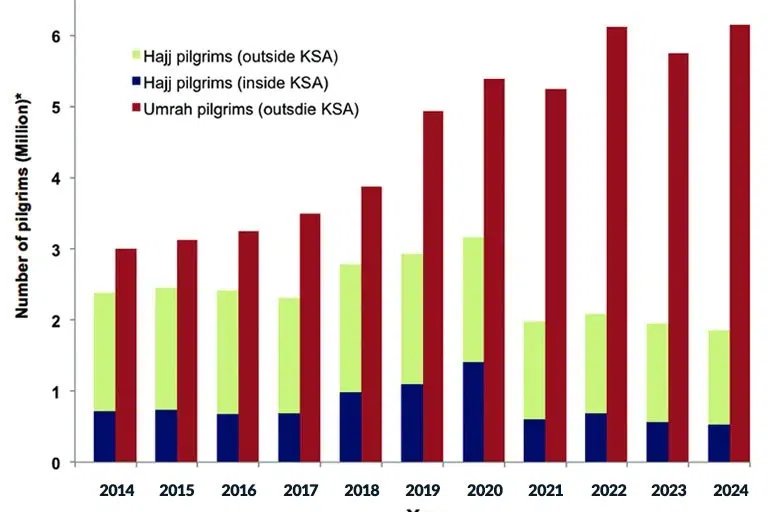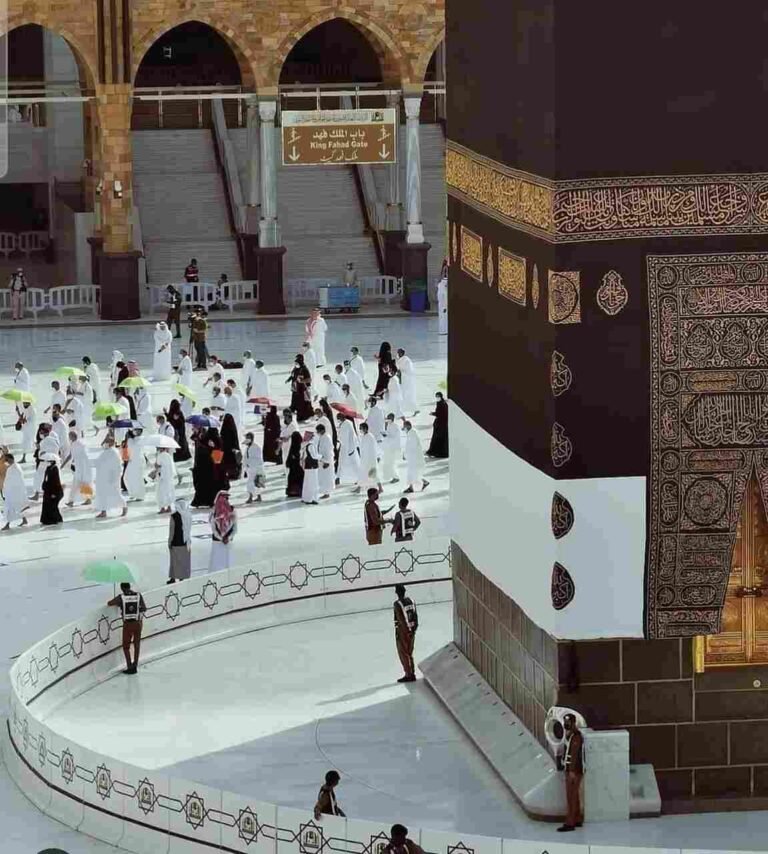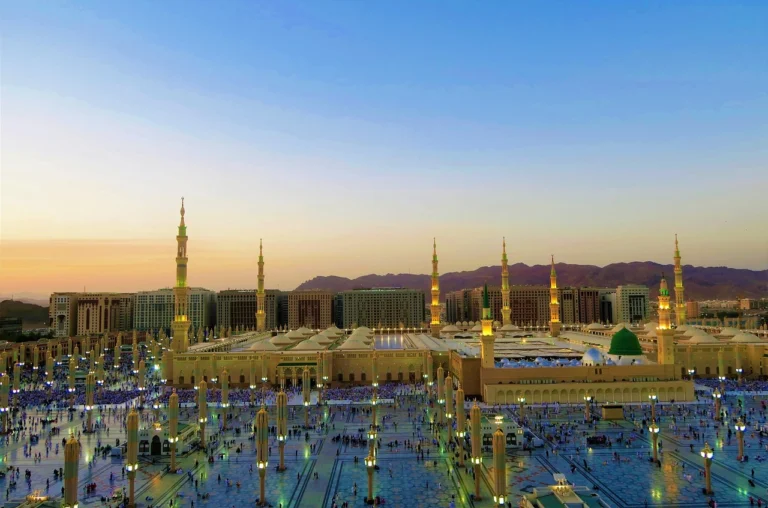Umrah Guide; Step-by-Step
Umrah Meaning
In Arabic, “UMRAH” means “‘a visit‘ to the Holy Kaaba (the Sacred House of Allah Almighty). In this blog, you will find comprehensive information about Umrah in Islam.
The heart of Islam lies within the Masjid al-Haram in Mecca, where the cubic structure of the Kaaba, adorned in black cloth, stands as a guiding light for Muslims around the world. This simple structure, believed to have been built by Hazrat Abraham (AS) and Hazrat Ishmael (AS), serves as the focal point for five daily prayers, uniting Muslims in their worship of Allah (SWT) regardless of location.
If you want to learn more about the Kaaba, click on the link and explore the History and Significance of the Kaaba in Islam.
What is Umrah in Islam
In Islam, Umrah is an optional pilgrimage to Mecca to seek Allah Almighty’s blessings and forgiveness. Most pilgrims make the Umrah journey during Ramadan or in Rajab and Shaban, the Islamic lunar months that follow it. Muslims believe there is more mercy, greater acceptance of prayers, and a higher reward for worshipping during these holy months.
–
Narrated by Hazrat Abu Huraira (R.A):
Allah’s Messenger (S.A.W.) said, “(The performance of) `Umra is an expiation for the sins committed (between it and the previous one). And the reward of Hajj Mabrur (the one accepted by Allah) is nothing except Paradise.”
(Sahih al-Bukhari 1773)
What Is the Purpose of Umrah
The purpose of Umrah is to seek the blessings of Allah Almighty, pray for forgiveness, and renew faith in Islam. Those who perform Umrah are believed to be cleansed of their sins and rewarded with many blessings. Umrah involves performing specific acts of worship, including circulating around the Kaaba. However, Umrah is a shorter version of Hajj.
Umrah Rituals – How to Perform Umrah
Umrah and Hajj are quite similar, but Umrah can be performed at any time, unlike the Hajj. In the following section, you can learn about how Umrah is performed step by step.
- Ihram from Miqat
- Tawaf
- Sa’i
- Halq (head shaving) or Taqsir (hair trimming or shortening for both males and females).
How to do Umrah

Dua for Umrah

Step 1 – Ihram
Before performing Umrah, you must enter the state Ihram. It involves wearing two pieces of white cloth for men and loose-fitting clothes for women, as well as abstaining from certain actions such as cutting nails, wearing perfume, hunting, etc. It is important to make the intention (niyyah) to perform Umrah and recite the Talbiyah, a prayer that declares one’s submission to Allah Almighty.
To learn more about the requirements and significance of Ihram, read our comprehensive guide on Entering the State of Ihram for Hajj and Umrah.
Salah Al-Ihram
Before entering the state of Ihram, it is Sunnah to perform two Rakahs of Salah. This can be performed after getting changed at the airport or on a flight before crossing the Miqat, provided prayer facilities are on board. To complete two Rakahs Nafl for Ihram, observe the prayer.
When pilgrims wear the Ihram, all social and financial differences disappear. Everyone stands equal before Allah Almighty. During Umrah or Hajj, it becomes difficult to distinguish between wealthy and less fortunate pilgrims based on their clothing. It’s also important to realize that entering Ihram imposes some limitations on you, which you should be aware of. Among them are the following:
Restrictions During Ihram
- They are not allowed to cut their nails or shave their beards.
- Stitched clothing is not allowed for men. They wear two white, unstitched clothes. An Ihram is any completely white or black garment that covers a woman’s entire body except her face and hands. Therefore, during the Umrah or Hajj, ladies are allowed to wear clothing with stitching.
- A woman’s hands and face should be the only visible body parts.
- Scent products such as perfumes, deodorants, aftershaves, and scented soaps are prohibited. Unscented soaps are recommended.
- Sexual relations are prohibited for pilgrims in Ihram.
- Killing or harming animals and plants is not permitted while in Ihram.
Niyyah for Umrah
Niyyah is like making a plan in your heart. It is the intention in your heart to perform the act of Umrah to please Allah Almighty. This intention is very important because it marks the beginning of your spiritual journey. Niyyah doesn’t need to be said out loud. You can simply say it in your mind, in your language, or even in Arabic. You make this intention (Niyyah) before you put on the Ihram clothes and enter the state for Umrah.
Following are three examples of intentions that may be uttered in Arabic:
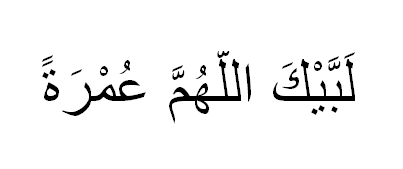


Talbiyah
The Talbiyah is a special prayer that Muslims recite when they perform Hajj or Umrah. It expresses their devotion and submission to Allah Almighty, the only one worthy of worship. The Sunnah method of reciting the Talbiyah is to pause at four places (indicated by the dashes in the text). The prayer is as follows:
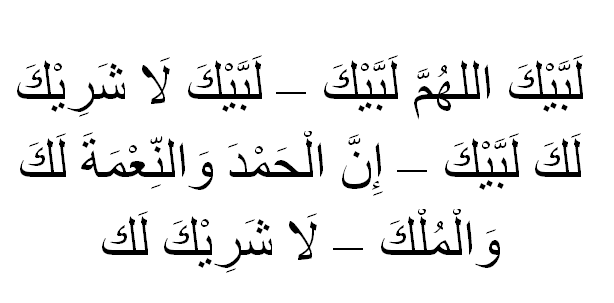
“O Allah Almighty, I respond to Your call. I do respond. I respond to Your call. You have no partner. I do respond. Praise, blessings, and sovereignty are only Yours.”
Step 2 – Tawaf
Tawaf is a mandatory step for the completion of Umrah just like Hajj. To fulfill this obligation, pilgrims must perform seven anti-clockwise circles around the Kaaba, beginning and ending at the Black Stone. Before starting, we need to be in a state of ritual purity through Ablution. Men must follow specific practices such as uncovering their right shoulder (Idtiba) and walking briskly during the first three rounds (Raml). Women should maintain full modesty while walking normally.
While this brief overview highlights its importance as a key part of your Umrah, for a detailed step-by-step guide on performing Tawaf, including its significance, types, and preparation, visit our comprehensive blog: ‘Tawaf in Hajj and Umrah: Significance and Method.’
To learn more about the significance and deeper meaning of Tawaf, you can refer to this blog post: Tawaf in Hajj and Umrah: Significance and Method.
Step 3 – Sa’i
Sa’ee is a ritual involving walking or running between the hills of Safa and Marwa, located near the Kaaba in Makkah. Sa’ee is derived from the Arabic word Sa’a, which means to strive or to pursue. It is performed after completing the Tawaf. Sa’ee consists of seven rounds, starting from Safa and ending at Marwa. Each round is about 450 meters long, making the total distance of Sa’ee about 3.15 kilometers. Sa’ee marks the story of Hazrat Hajar (AS), the wife of Prophet Ibrahim (AS), who searched for water for her son Hazrat Ismail (AS). Allah (SWT) rewarded her patience and trust by making a spring of water, known as Zamzam, pour out from under Hazrat Ismail’s (AS) feet. Sa’i symbolizes determination, faith, and gratitude to Allah Almighty.
To learn more about the significance of Sa’ee, read our comprehensive blog post: Sa’ee Between Safa and Marwah: A Pillar of Hajj and Umrah.
Duas recited at Safa and Marwa mountains during the Sa’i ritual of Hajj and Umrah:
Dua upon Reaching Safa:ِ

This dua is recited only once upon reaching the top of Safa while facing the Kaaba.
Dua upon Reaching Marwa: Repeat the same duas recited upon reaching Safa.
If you want to read more about Zamzam Water, then click on the given link: Zamzam Water: Its History, Significance and Benefits for Muslims.
Step 4 – Halq or Taqsir
Halq or Taqsir refers to the act of cutting or shaving hair, symbolizing the completion of Umrah and the removal of worldly sins. Men should shave their heads or trim their hair, while women should cut a fingertip-length of their hair.
Performing Umrah in Islam involves these basic steps and can be completed in a few hours, depending on your pace and preference. Umrah is a rewarding and spiritual journey that brings us closer to Allah Almighty and cleanses our souls. May Allah Almighty accept our Umrah and grant us His mercy and forgiveness.
To delve deeper into the symbolism and traditions behind Halq and Taqsir, read our informative blog post: Significance of Shaving or Cutting Hair During Hajj and Umrah.
Frequently Asked Questions about Umrah
What is the difference between Umrah and Hajj?
The main difference between Hajj and Umrah is that Hajj is one of the five pillars of Islam. It can only be performed at a specific time from the 8th to the 13th of Dhul Hijah, the last month in the Islamic lunar calendar. Umrah is a short pilgrimage that is not compulsory and can be performed at any time of the year.
Approximately two million pilgrims from about 188 nations participate in the Hajj each year, making it one of the largest yearly gatherings of people in the world. Millions of pilgrims also perform the Umrah annually because it is cheaper and takes less time to complete.
How Long is Umrah
The duration of Umrah varies depending on factors such as the number of pilgrims, the time of the year, the day of the week, and the time of the day. Generally, Umrah can be completed in 4 to 5 hours as it involves only four rituals. However, some pilgrims may choose to stay longer in Makkah and Madinah to visit other holy sites and perform Nafl Prayers. The minimum package for Umrah is seven days, typically consisting of three days in Madinah and four days in Makkah.
Conclusion
Umrah is an optional but important pilgrimage in Islam. It involves seeking Allah Almighty’s blessings, forgiveness, and spiritual renewal. As Muslims, we can perform it throughout the year as a means to express our devotion, cleanse our souls, and unite with the Muslim community in worship around the Kaaba in Mecca. The pilgrimage consists of specific rituals, including entering the state of Ihram, performing Tawaf, conducting Sa’i, and concluding with the symbolic act of shaving or trimming hair. Ultimately, it is a spiritual and rewarding journey that brings us closer to our faith.


